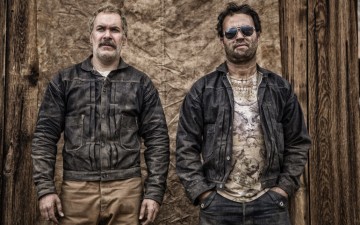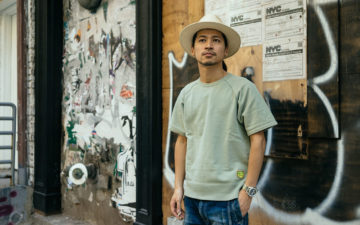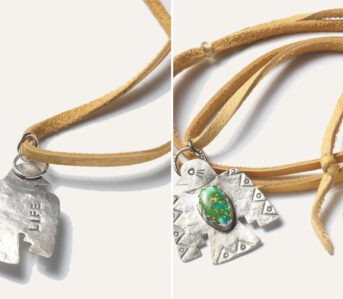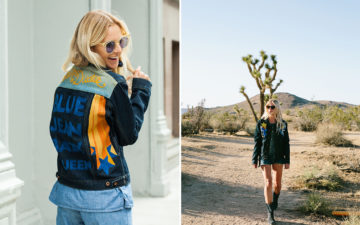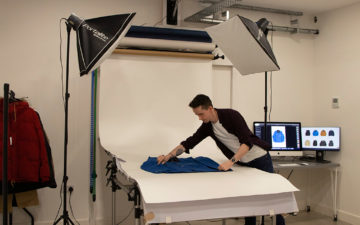I was first exposed to Heimat during my premier visit to London’s Clutch Cafe in 2018. As one of the only non-Japanese labels in the store, Heimat stood out like a charming sore thumb with a collection of rugged yet refined German-made knitwear.
Since then, Heimat has cemented itself as one of the leading brands in the heritage scene when it comes to knitwear, up there with brands like S.N.S. Herning and Andersen Andersen. Its Deck and Mechanic Caps are especially popular pieces, but Heimat offers a full range of clothing from merino wool t-shirts to socks and sweaters.
I caught up with the brand’s founder and designer, Christian Hofmann, to learn a bit more about the brand and what makes it tick.
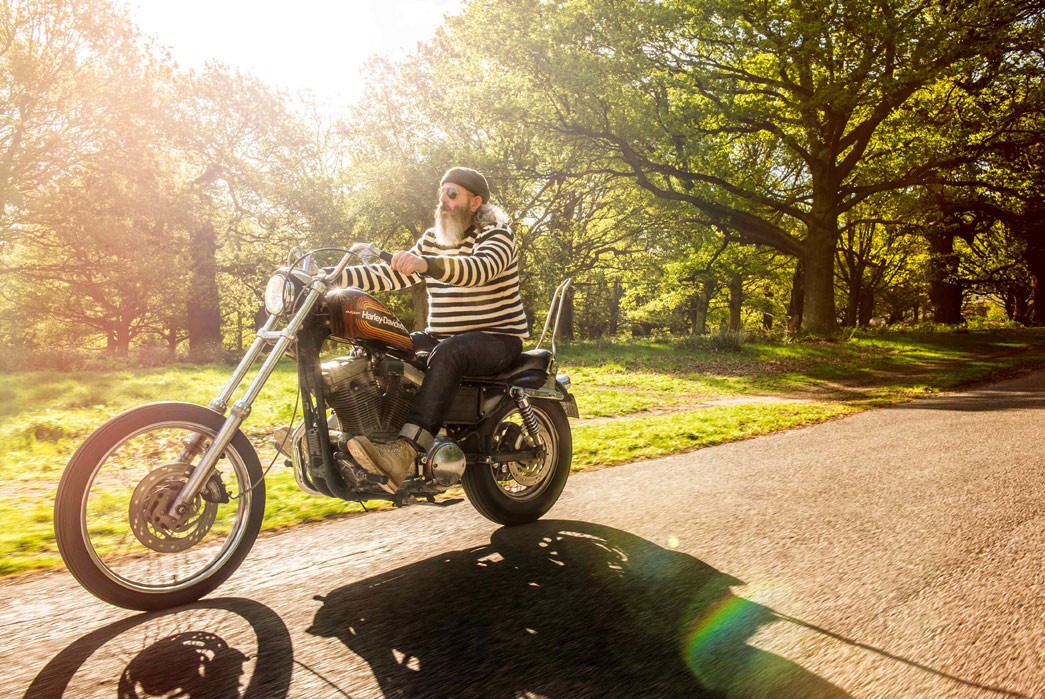
James: Hey Christian. It’s great to make your acquaintance. How are things with you?
Christian Hofmann: Hey James. Likewise! Thank you for your interest in Heimat. It’s been great but really busy. We have had a very nice start to the year with some very interesting new projects. The highlight was product testing during a ski tour in the Norwegian mountains.
All in all, we can’t complain, having had some really disruptive years with COVID and Brexit. We are also in the process of getting our first spring/summer collection ready which is super exciting as we will finally be able to offer our consumers a full range of goods that complement our core assortment. Lightweight Jackets Woven Shirts and Trousers. Watch this space.
J: Tell us about yourself and how you got into the world of menswear.
CH: My name is Christian and I was born in the South of Germany, with my mother being from Bavaria and my Dad from Hamburg. I grew up close to Munich, which brought me a lot into the mountains, Snowboarding and hiking. But I also spent a lot of time in the north with my Grandparents which brought me close to the German Sea. Both of my families were big into sailing and mountaineering.
After finishing school I went to study fashion management. From about 12 years of age, my dream was to have my own skateboard brand, so I thought I might as well learn how to run a business. After my studies, I went for an internship at Ralph Lauren which somehow ended up being a stint of 12 years. First I worked in wholesale in Germany and the UK as a key account manager.
After that, I changed division into retail and e-commerce merchandising as Director of Buying and Merchandising for the EU market for both Polo and RRL. In 2016 Ralph Lauren went through a big re-structure and I was offered redundancy which was a great opportunity for me to get out of the corporate world, take faith into my own hands, and start my own business.
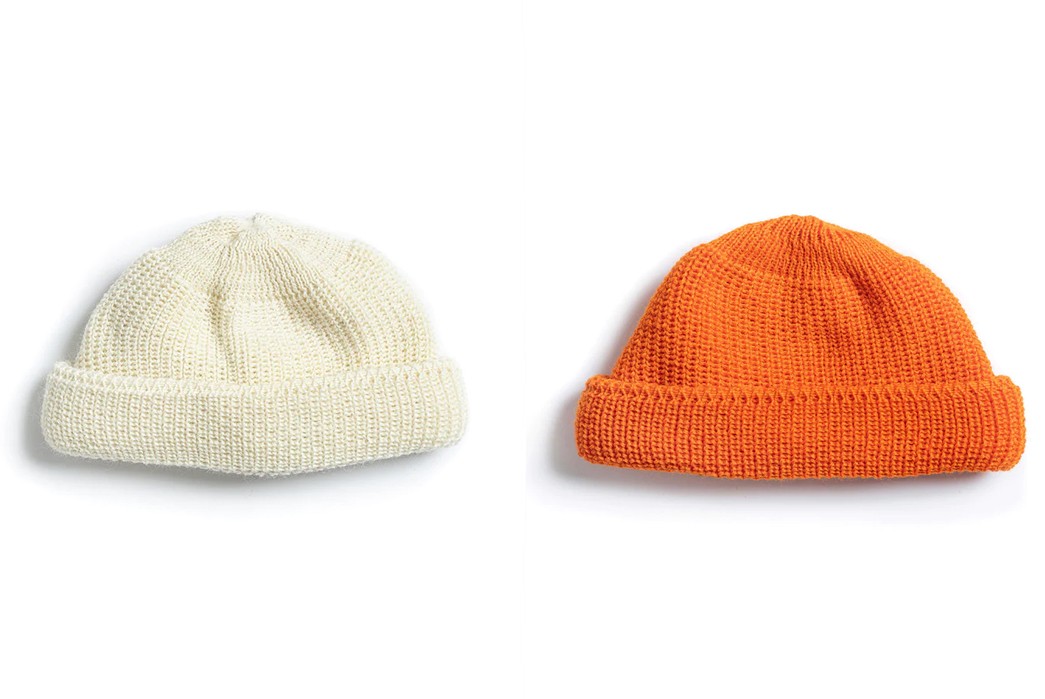
J: What or who made you decide to start Heimat? Let’s hear the story of the brand.
CH: I have touched a little bit about my family heritage which was a fundamental inspiration for Heimat, especially my Grandad and my great Grandad on my mother’s side. Both were sports fanatics and passionate photographers.
Our family home is plastered with pictures of their adventures and I was always very mesmerised looking at them. Especially one picture of my great-grandad on his first descent in the Austrian Alps. He was wearing a very particular short beanie and I wanted to own that same style of hat – but I couldn’t find it anywhere. That hat became our Deck Hat and that was the start of Heimat.
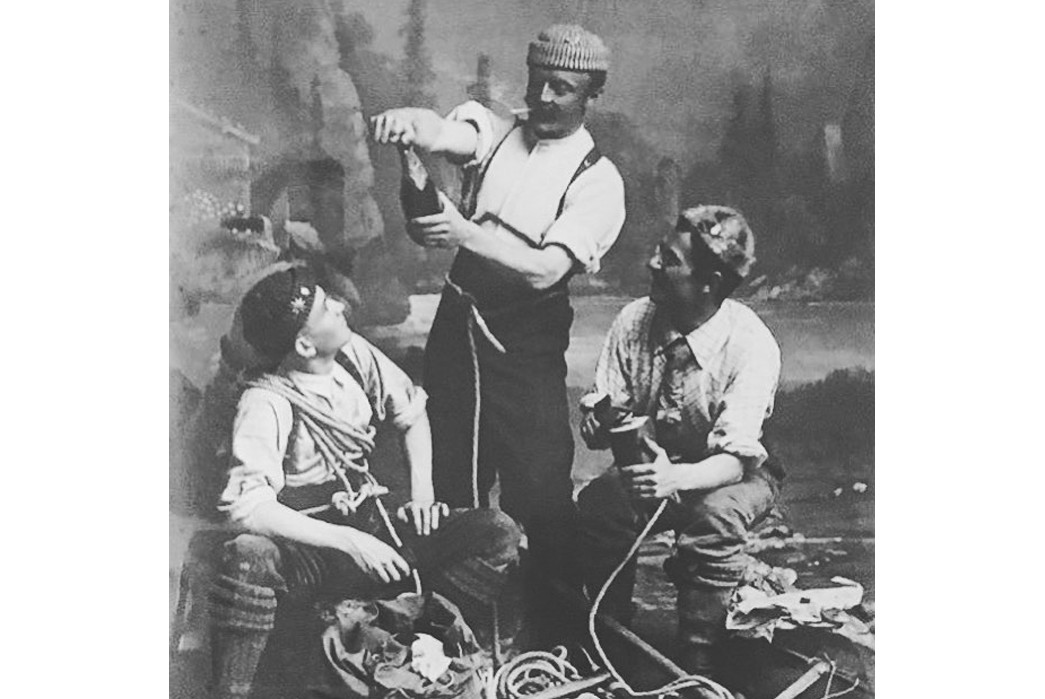
J: Tell us about the name Heimat.
CH: Heimat is a German word that has no translation to English. It describes the social belonging to a place sort of your spiritual home. And I liked the idea of our clothes being described as a comfort blanket giving you security i.e. giving you the feeling of being home.
For example you leave the house for a walk and throw on our U Boat Rollkragen, you instantly feel comfortable. Our jumpers and hats are like a good pair of raw selvedge denim the more you wear them the better they get and you make them your own.
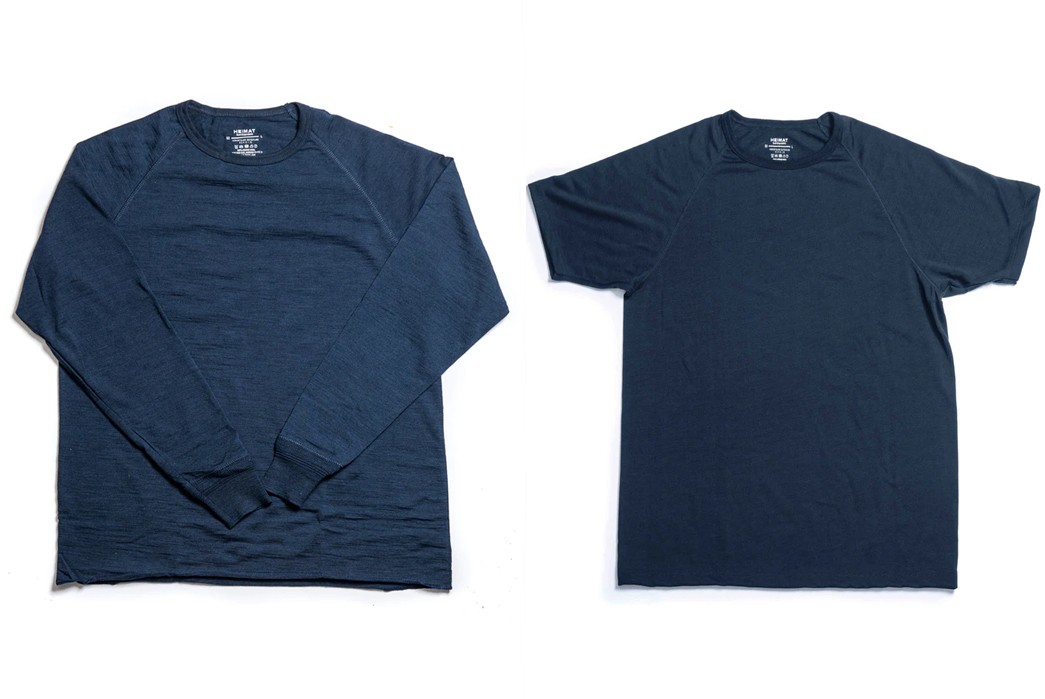
Heimat Merino Raglan Long & Short tees, available for $175 and $155 respectively from Heimat.
J: What qualities do you ensure Heimat products are imbued with and why?
CH: We want our clothes to be long-lasting timeless and functional in an everyday way. We don’t base our designs on what’s in fashion, rather than what will always be in fashion. I don’t want our customers to feel dressed up. Instead, they should feel comfortable with whatever they’re doing on that given day, whether it be day-to-day work or an adventure in the outdoors.
For example, our Merino Tees are the perfect day-to-day layer but also perfect for skiing or hiking. As mentioned earlier, we just field-tested that garment through ski touring and they proved their functionality.
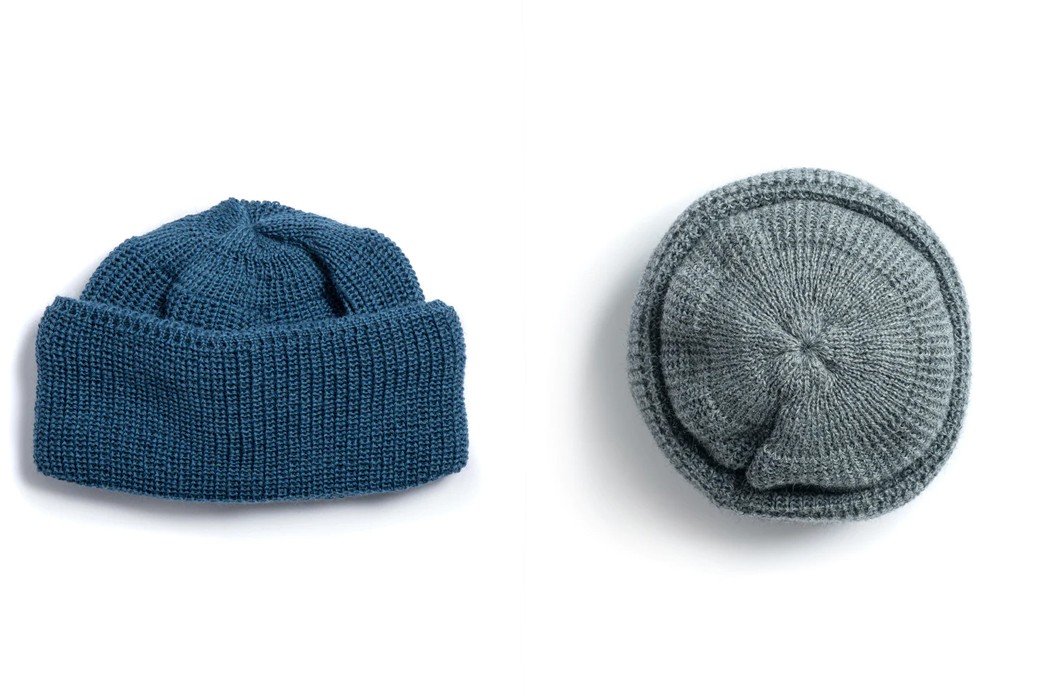
Heimat Mechanics Cap, available for $70 from Heimat.
J: Why knitwear?
CH: Well I guess it was a natural progression from our Hats into Sweaters and offering something you couldn’t really find anywhere else. In the end, the consumer decided that for us. When we had our hats we were asked for sweaters and we said ‘why not?’ and soon we had a full range.
J: When we met, we discussed German manufacturing and how it is revered for being reliable, concise, and of high quality. Obviously, there are some other brands that produce garments and accessories in Germany, but why do we not see more German manufacturing in the textile/garment industry these days?
CH: It is a funny one. Germany is world-renowned for good quality and efficiency. Cars and washing machines made in Germany are in demand all around the world but unfortunately, there aren’t many clothing manufacturers left (which at some point was a very big industry in Germany).
The lack of it now has probably to do with the German efficiency. To make things in Germany became too expensive for big businesses or the capacity could not be met and people looked elsewhere or manufacturers themselves moved their production. The story of globalization. But we are lucky to have some very reliable partners who live up to the standard and the quality Germany is known for around the world. Or as we call it “Qualitätsprodukte”
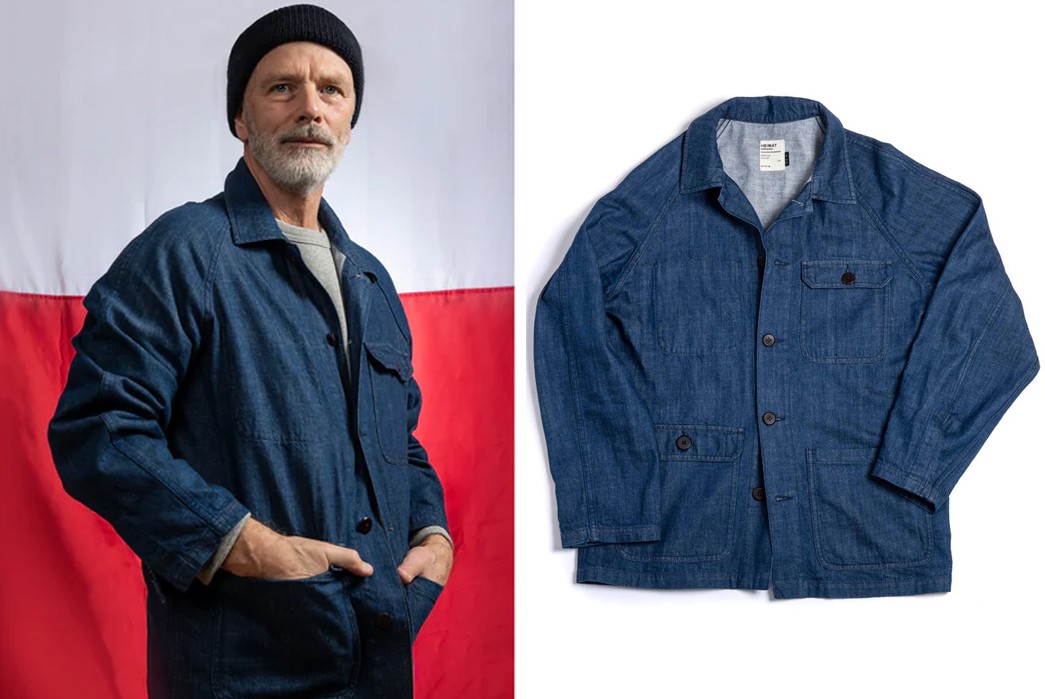
Heimat Journey Coat, available for $395 from Heimat.
J: So with the focus being on efficiency (German manufacturing), do you not see production in Germany growing? I’m aware Merz B. Schwanen makes goods there, but I’m not aware of any up-and-coming brands making high-quality stuff in Germany.
CH: That’s a great question. Unfortunately with the current market conditions, I see more closing than opening. Don’t get me wrong, there are some great artisanal small workshops but nothing like in Italy or Portugal.
High labor costs are probably the biggest issue in finding a workforce and the global problem of the rising cost of resources, COVID, and the Ukraine war came as a perfect storm. It is getting harder and harder to find people who are willing and have the passion to do the work. There are whole villages that used to be known for textiles and even specific products and now there are only some old advertisements left and some beautiful old empty factory buildings. The big productions go where they can pay for staff and find the right people for the work. But having said all, that it’s an opportunity for people like us and Schwanen to do things differently and find our own niche.
J: You recently delved into the world of Denim for the first time with your Journey Coat. Congrats, it looks great. Was this a difficult change of pace from knitwear or did your background in the clothing industry hold you in good stead when formulating a denim jacket?
CH: Thank you for the flowers, James. We are very proud of our first piece of Outerwear. It was fairly easy to get going as we knew what we wanted and in the end it’s always about the end consumer. All of our designs I basically design for myself and I knew what I was missing in my wardrobe and in our collection.
We have a lot of friends in the industry and Black Horse Lane felt like the perfect partner to start in that new territory, especially when it comes to denim and they are a brand with similar values to ours.
J: What makes the Journey Coat stand out? The world is chock full of chore-style/ coverall jackets – what drew you to this style?
CH: Dangerous question! Where to start? The outset was to design a layer-up item to be worn on top of our knitwear to give you that extra protection when needed. It’s called the Journey Coat for a reason. Our knitwear is already like a piece of Outerwear but it naturally doesn’t have storage options and the Journey coat gives you exactly that. It’s the perfect travel companion no matter what you do, may it be a walk in the countryside and you need pockets for a phone or dog leash or a trip overseas where you want closed pockets for passports and boarding passes.
The biggest difference to your traditional work jacket is the Raglan sleeves which are designed to give you extra movement when wearing on top of our Sweaters. It is really a hybrid between a French work jacket and a German army field shirt. It has adjustable cuffs, three outside pockets, two inside pockets, and a lot of other little details like the under collar stitching for extra reinforcement which we found on a vintage Field Shirt.
J: Thanks for taking the time to chat with me, Christian. What’s next for Heimat?
CH: No problem, it was great to connect.
We are super excited to launch our first woven shirts soon. We have two models. The Kuenstlerhemd (artist shirt) a 1x open pocket shirt and the Arbeitshemd (work shirt ) – a 2x flap pocket shirt. Both come with a Raglan sleeve to make them super comfy and give you loads of extra movement. They are a boxy regular fit with a soft collar (not a button down) and with loads of little Heimat subtle-but-purposeful details.
I wanted my favorite shirt that is a bit more dressed up than your basic T-shirt but as comfortable, or even more! Other than that we have a few new lighter fabrics like cotton hemp and linen cotton in our hats and sweaters in the pipeline for the warmer days of the year. Look out for all of the above!


